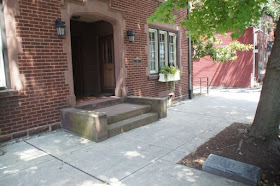 |
| A carriage stone and hitching post are both visible in this photograph. |
 |
| The decorative boot scraper used to clean boots. |
 |
| Boot scraper with some curls on top. |
 |
| This boot scraper is stuck between planter and sculpture. More than likely it hasn't been used in the recent past. |
 |
| Here are two carriage steps at two city homes. |
 |
| Love this little boot scraper. |
 |
| This carriage step by the tree has a letter "H" on it. More than likely the last name of the home owner when the stone was place by the curb. |
 |
| Another small decorative boot scraper. |

No comments:
Post a Comment